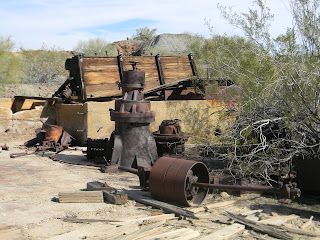Squandered Wealth

Another snipit from my book, "Dead and Buried in the Southwest Desert". "What goes up, must come down. While each mining town enjoyed the wealth and growth which brought many businesses and families, they all eventually were brought down by greed, outlaws, bandits, Indians, murder, natural disasters, and the harsh elements which the southwest deserts brought. These once booming mining towns are now virtual ghost towns from fires, floods, and dried up mines. Today, you will find a few residence still living in these places. The towns are surviving from the many tourists who are interested in the history, want a wild west experience, or to check out the rumors of the many ghosts that still seem to live in these small desert settlements."







